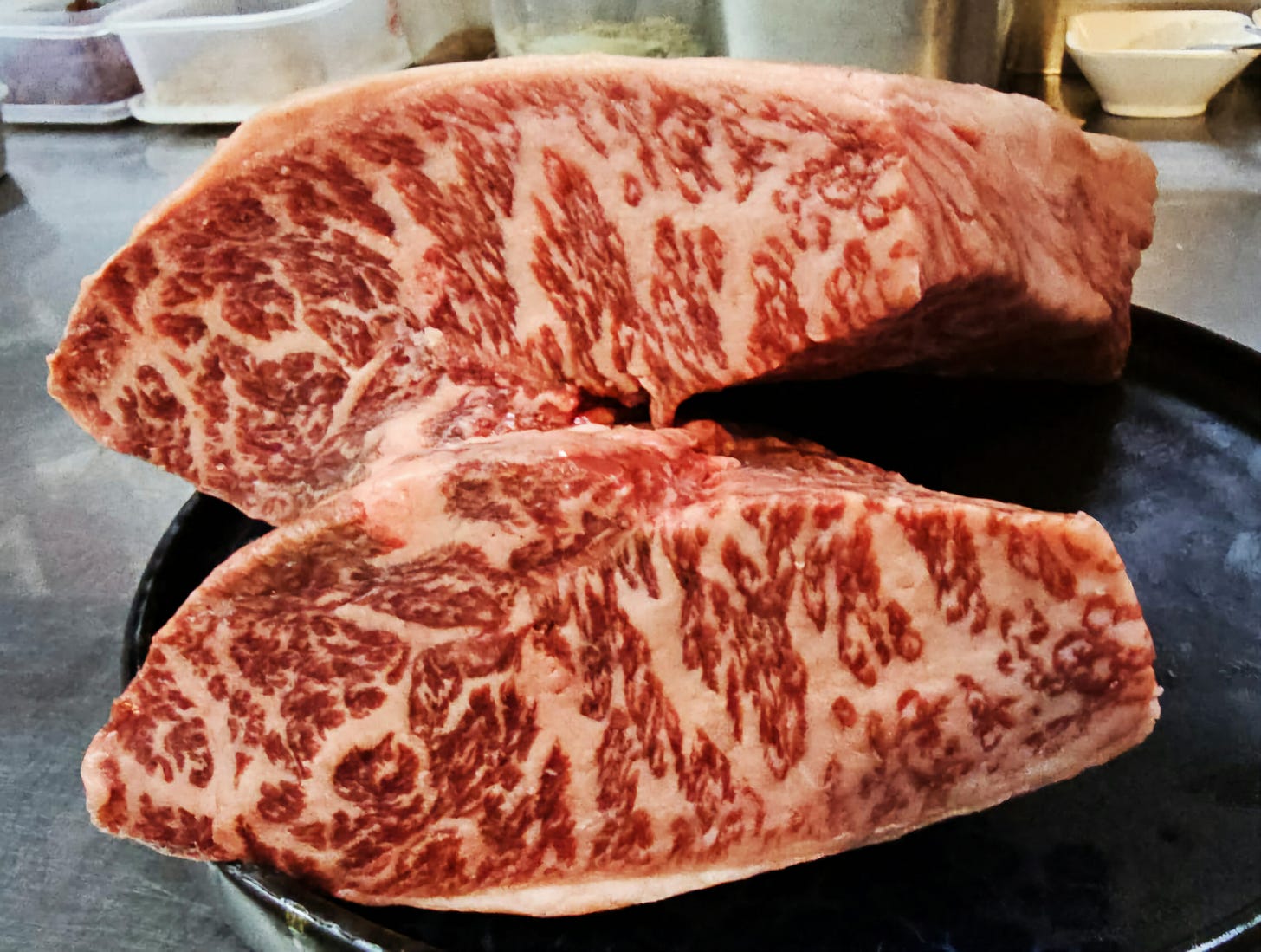When people hear “Wagyu,” its birthplace Japan springs to mind, along with Australia – now the world’s second largest Wagyu producer. But over the past two decades, Wagyu cattle have been raised in many other parts of the globe. And while purists still swear by Kobe or Mishima, the Wagyu gene pool has officially gone global.
United States
One of the earliest adopters of Wagyu genetics outside Japan. Starting in the 1970s, full-blood Wagyu bulls and heifers were exported to the U.S., until Japan declared them a national treasure and closed exports. These animals were cross-bred with Angus cattle to create what is now widely marketed as “American Wagyu”, a hybrid typically consisting between 50 to 75% Wagyu. Known for decent marbling, but also for a bolder, beefier flavor that Americans tend to prefer. The cattle are usually grainfed for 400 – 500 days, offering consistency in size, texture, and affordability.
Chile
Chile is not often associated with Wagyu, but its pristine conditions and strong animal health infrastructure have made it a rising star in Wagyu. The country began importing Wagyu genetics in the early 2000s and focused on full-blood and F1 (50% Wagyu) crosses, typically with Angus or Hereford cows. What makes the product stand out is its environment. With access to clean water, temperate climate, and vast pastures, Chile can offer a low-stress life for cattle, which contributes directly to meat quality. Some Chilean producers are also experimenting with hybrid feeding programs that mix pasture and grain, hoping to strike a flavor balance between grass-fed brightness and grain-fed richness. Chile’s free trade agreements have also helped position it as a Wagyu exporter to the U.S., China – and even Japan.
United Kingdom
Wagyu farming in the UK is still niche, but it’s growing steadily among artisanal producers aiming to bring something different to the premium beef market. Most UK Wagyu is raised by small-scale farmers using either full-blood or high-percentage Wagyu crosses with native British breeds like Dexter or Shorthorn. These cattle are often grass-fed or reared on mixed rations with minimal grain. As a result, UK Wagyu can be leaner than Japanese product, but often carries stronger flavor with a provenance appeal. Producers focus on traceability, animal welfare, and breed integrity.
South Africa
South Africa’s beef industry has been built around native breeds like Bonsmara and Nguni, but Wagyu cattle have found a stronghold among producers looking to differentiate in export markets and high-end retail. The South African Wagyu Society was founded in 2014, allowing farmers to import full-blood genetics and to register cattle through a formal traceability program. Most producers rear their Wagyu on grain-based diets, with slaughter weights and marbling scores similar to those in the U.S. or Australia. South African Wagyu is now beginning to show up in Europe, the Middle East, and even parts of Asia.
Canada
Canada’s cattle industry is robust, and its embrace of Wagyu has been quiet but determined. Like their U.S. counterparts, Canadian ranchers often work with cross-bred Wagyu-Angus animals. But a small yet growing number of full-blood herds exist in Alberta and British Columbia. Canada’s cold climate presents both challenges and benefits. Harsh winters encourage farmers to house and carefully manage their herds, leading to close control over feeding, health, and growth. The result is beef that’s richly marbled, tender, and increasingly respected on the export scene. Canadian Wagyu producers are working to position their beef as a cold-climate delicacy, meaning distinctive in flavor, sustainable in scale, and aimed at premium retail and restaurant channels.
Other Notables
-
Germany and Poland have small Wagyu breeders, focused on local markets and chef collaborations.
-
Taiwan & South Korea have built up domestic Wagyu-style beef programs, using imported genetics and similar feeding regimens.
-
Argentina, known for its grass-fed steaks, is experimenting with Wagyu-Angus crosses. Marbling remains a challenge though with traditional pasture feeding systems.
-
New Zealand produces both full-blood and cross-bred Wagyu, often marketed as a grass-fed alternative with ethical branding.
Final Bite
Japan will always be the spiritual home of Wagyu, and Australia its largest international ambassador. But the category is no longer a two-player game. As consumers become more educated, the nuances will become part of the conversation, not just an afterthought. And that’s a good thing—for chefs, for diners, and for the breed itself.
Image Credit:
_ _ _
© CHURRASCO PHUKET STEAKHOUSE / ALL RIGHTS RESERVED
Reprinting, reposting & sharing allowed, in exchange for a backlink and credits
Churrasco Phuket Steakhouse serves affordable Wagyu and Black Angus steaks and burgers. We are open daily from 12noon to 11pm at Jungceylon Shopping Center in Patong / Phuket.
We are family-friendly and offer free parking and Wi-Fi for guests. See our menus, reserve your table, find our location, and check all guest reviews here:
https://ChurrascoPhuket.com/
#Churrascophuket #jungceylon #phuketsteakhouse #affordablewagyu #wagyu

